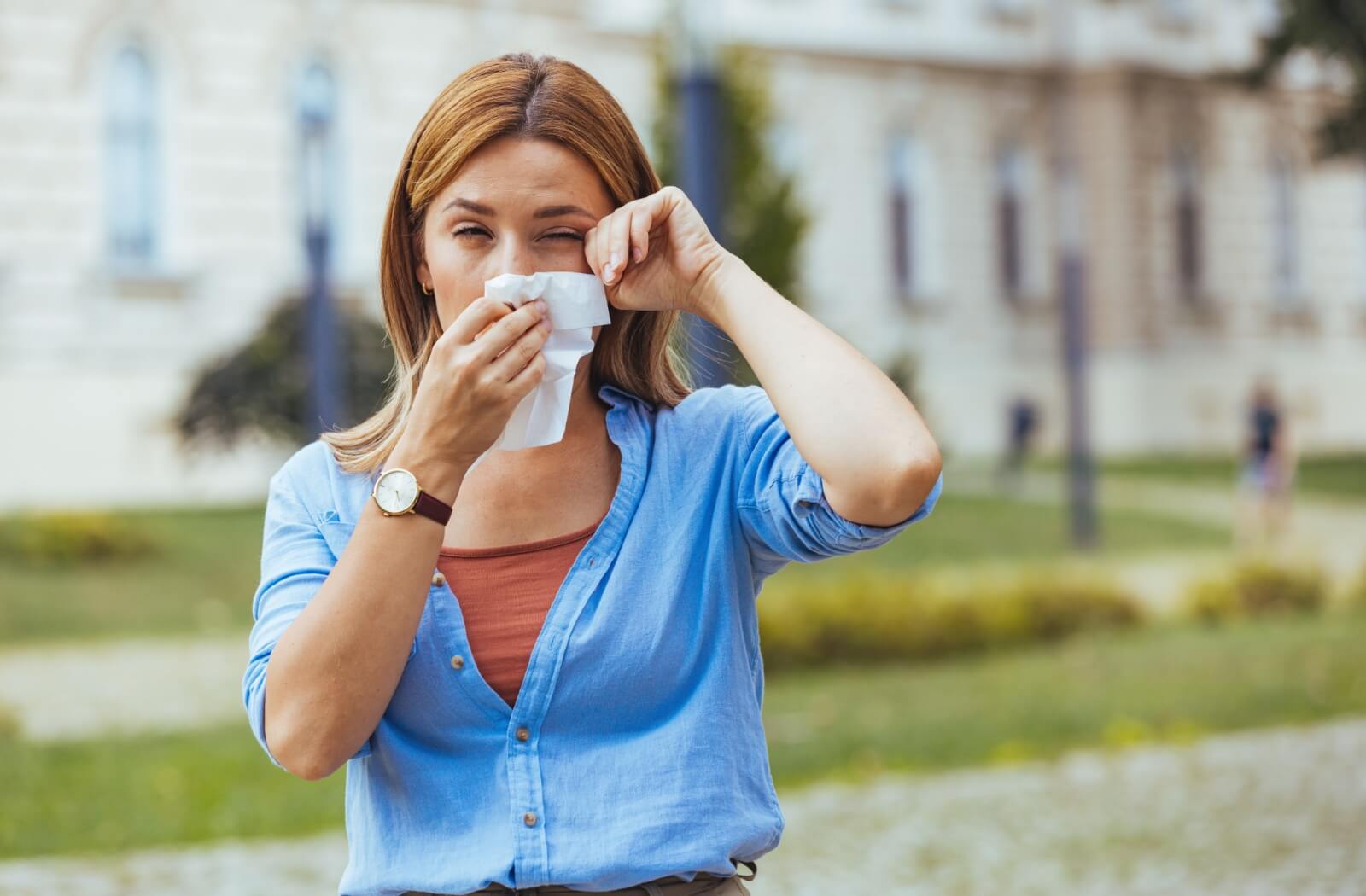Tears do more than express emotion—they also play a vital role in protecting your eyes and keeping them healthy. While they may look like simple droplets, tears are made up of a delicate balance of water, oil, and mucus.
But what happens when that balance is thrown off? There are many reasons why your tears might sting instead of soothe, including exposure to smoke, excessive screen time, and conditions like dry eye, blepharitis, or allergies.
Understanding the cause of stinging tears is the first step to relieving discomfort and helping your eyes feel better.
What Are Tears Made Of?
Tears might seem like simple drops of water, but they’re actually made up of three key layers: water, oil, and mucus. Together, these components help protect your eyes, keep the surface smooth and moist, and deliver essential nutrients to the cornea.
When this tear film is balanced, it supports your vision, eye hygiene, and overall comfort. But when that balance is disrupted—whether by environmental irritants, eye conditions, or general health—tears can sting or burn, which increases the risk of other complications..
When to Get Checked Out
Occasional stinging is common and often related to your environment or daily habits. But if you notice symptoms regularly—or if they’re accompanied by additional changes—it’s time to book an eye exam. You should seek professional care if you experience:
- Frequent stinging or burning
- Persistent blurry or fluctuating vision
- Ongoing redness or swelling
- Discomfort that doesn’t go away
Getting to the root cause early can help protect your vision and improve your long-term comfort.
Common Reasons Your Tears Might Sting
If your eyes have ever watered only to sting moments later, you’re not alone. Below are some of the most common reasons behind that discomfort—from everyday irritants to underlying medical issues.
1. Environmental Irritants
Air pollution, smoke, strong scents, and harsh cleaning products are all common culprits. Even dry or windy weather can affect the tear film, making your eyes more vulnerable to stinging and dryness.
To protect your eyes, consider using a humidifier indoors and wearing wraparound sunglasses or sports goggles outside to minimize exposure.
2. Dry Eye Disease
It might sound contradictory, but dry eye disease can actually cause excessive tearing. When your eyes aren’t properly lubricated, they may respond by producing a flood of watery tears—tears that lack the oil and mucus needed to remain on the eye’s surface.
This imbalance leaves your eyes watery, but not truly moisturized. The result is often burning, stinging, or a gritty sensation. Dry eye disease can be triggered by screen time, aging, medications, or hormonal changes.
Lubricating eye drops may relieve mild symptoms, while more advanced treatments—such as prescription drops or in-office therapies—are often recommended for ongoing dry eye.
3. Eye Allergies
If your eyes feel itchy, watery, and irritated—especially during allergy season or around common allergens like pets or dust—you may be experiencing allergic conjunctivitis.
Allergic inflammation can change the composition of your tears, making them irritated rather than soothing. Other signs include puffiness, redness, and blurry vision.
Avoiding known triggers and using allergy-specific eye drops, as advised by your eye doctor, can help bring relief.
4. Blepharitis
Blepharitis is an inflammation of the eyelids that’s typically caused by blocked oil glands. When the oily layer of the tear film is compromised, tears evaporate too quickly, resulting in dryness, redness, and a burning or gritty sensation.
Daily lid hygiene and warm compresses are helpful for managing mild blepharitis. If symptoms persist, we may recommend prescription treatments or in-office procedures to reduce inflammation and bacteria.
5. Lifestyle Habits
Everyday habits can influence tear quality more than you might expect. Some contributing factors include:
- Extended screen time, which reduces blinking and dries the eye surface
- Poor makeup removal, leaving residue that causes irritation
- Smoking or exposure to second-hand smoke, which increases chronic inflammation
- Dehydration, which reduces healthy tear production
Supporting your tear health can be as simple as staying hydrated, taking regular screen breaks, and maintaining clean eyelids.
6. Conjunctivitis (Pink Eye)
Conjunctivitis, or pink eye, causes inflammation of the conjunctiva—the clear tissue that lines your eyelid and covers the white of your eye. It can be caused by viruses, bacteria, allergies, or chemical exposure.
Symptoms of pink eye often include stinging, watering, redness, and irritation. Treatment varies by cause:
- Chemical exposure calls for thorough flushing
- Bacterial conjunctivitis may require antibiotic eye drops
- Viral conjunctivitis often clears on its own, though monitoring is essential
Since pink eye can spread easily, you should see your eye doctor for a proper diagnosis and guidance on how to manage it.

7. Health Conditions
Some medical conditions can affect how your eyes produce or retain moisture. For example:
- Rosacea can lead to ocular rosacea, causing inflammation and stinging
- Sjögren’s disease, an autoimmune disorder, affects the body’s ability to create moisture and can lead to severe dry eye
If you’re experiencing persistent stinging, especially alongside other symptoms like light sensitivity or fluctuating vision, speak with your eye care provider to investigate further.
Your Eye Comfort Starts Here
Tears do more than keep your eyes moist—they support clear vision, comfort, and overall eye health. When something disrupts your tear film, even small issues can start to affect your daily life. Recognizing the signs early can help prevent more serious problems down the road.
If your eyes are stinging, watering, or just not feeling right, we’re here for you. The team at Vivid Eye Care can pinpoint the cause and recommend tailored solutions. Book your eye exam today and feel the difference.






















